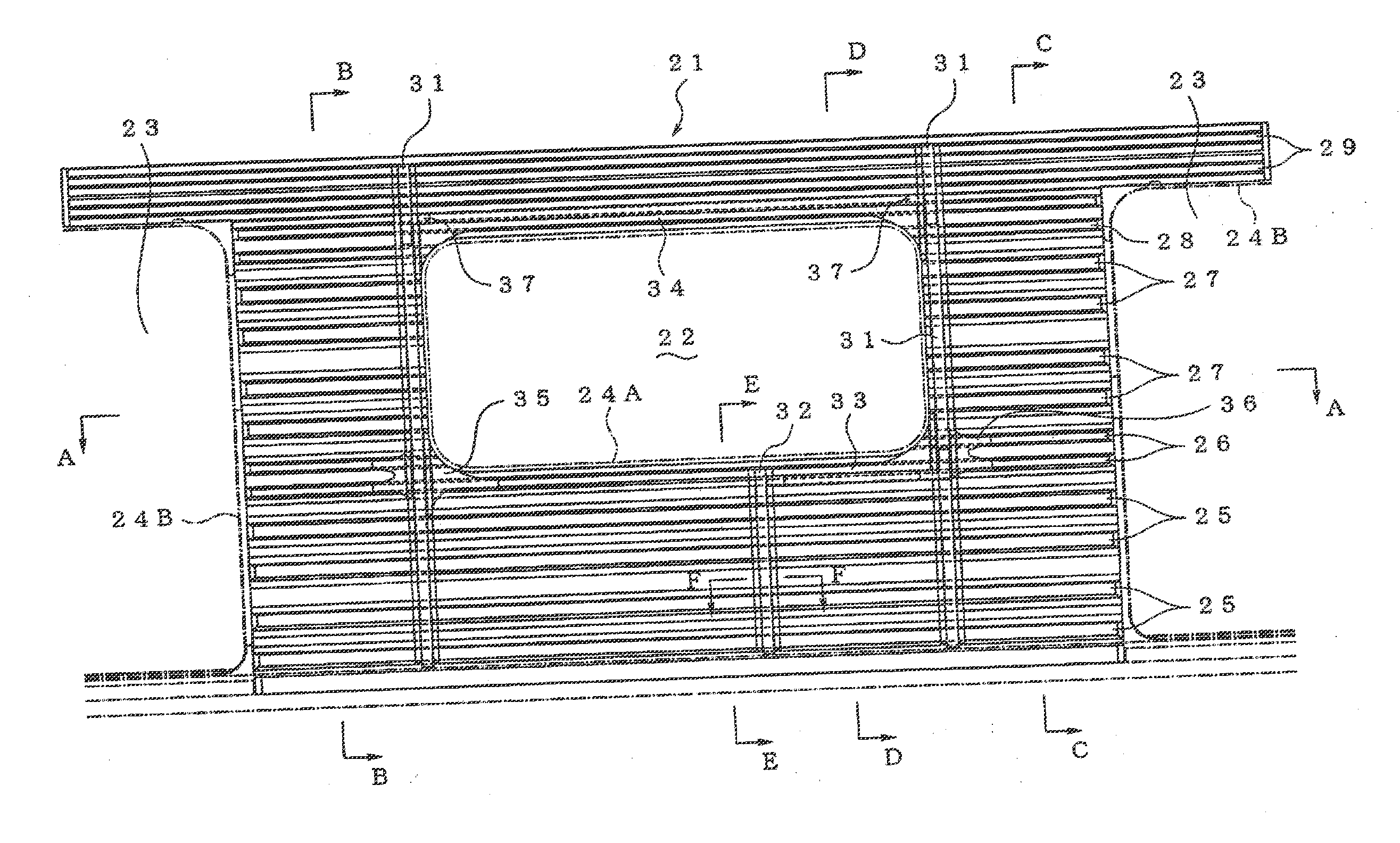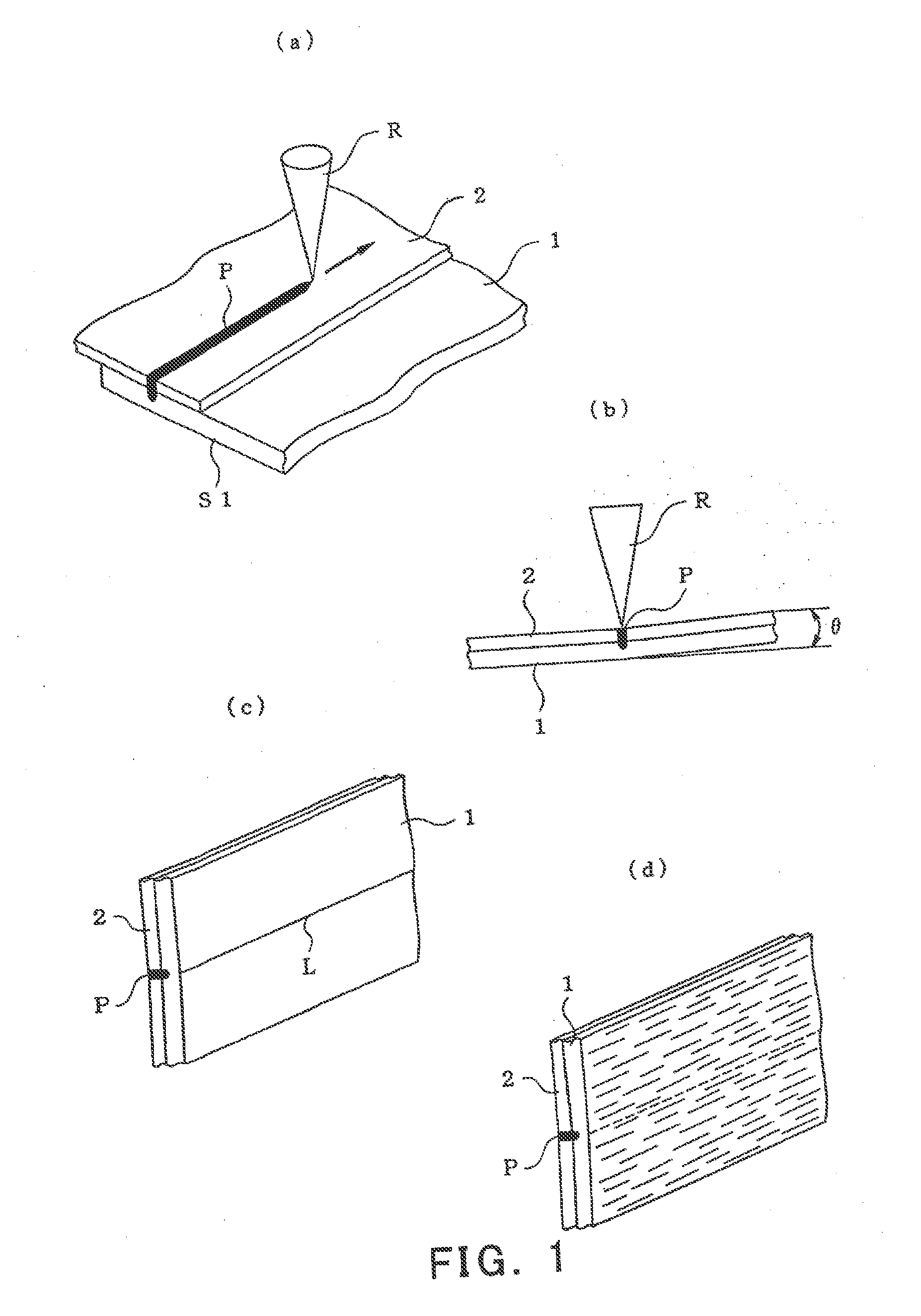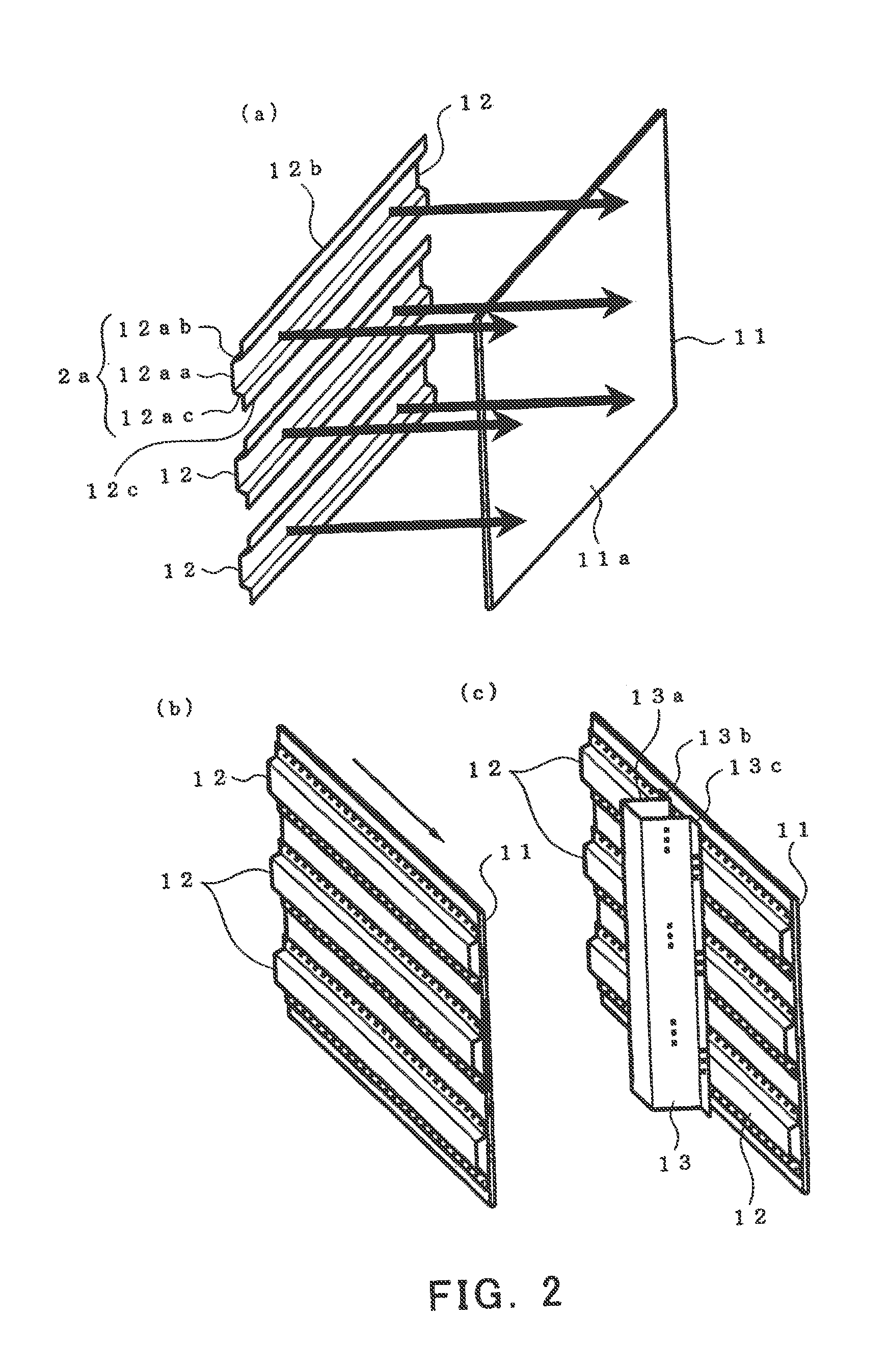Laser Welding Method, Laser-Welded Joint, Outside Sheathing Panel, and Body Structure for Rolling Stock
a laser welding and body structure technology, applied in welding/soldering/cutting articles, manufacturing tools, transportation and packaging, etc., can solve the problems of reducing the strength against general buckling and local buckling, the inability to obtain theoretical buckling strength, and the inability to achieve buckling strength, etc., to achieve the effect of improving dimensional accuracy, reducing buckling strength, and improving body structure stiffness
- Summary
- Abstract
- Description
- Claims
- Application Information
AI Technical Summary
Benefits of technology
Problems solved by technology
Method used
Image
Examples
first embodiment
[0152]FIG. 2 illustrates a basic principle based on which a body structure for rolling stock is constructed using a laser-welded joint according to the present invention.
[0153]As shown in FIGS. 2(a) and 2(b), partial penetration laser welding is used to join first reinforcement members 12 each substantially shaped like a hat in section to an inside surface of an outside sheathing 11 (a surface ground material having an outside surface 11a previously polished by a belt grinder substantially in parallel with the direction of a weld line to be formed by laser welding) so that the bottom of a resulting molten pool will not reach the outside surface 11a of the outside sheathing 11. At that time, the outside surface 11a of the outside sheathing 11 has been previously polished substantially in parallel with the direction of a weld line to be formed by laser welding. That is, the direction of the weld line to be formed by laser welding and the direction in which the outside surface 11a has ...
second embodiment
[0174]FIG. 20 is a perspective view showing a body structure for rolling stock according to a second embodiment of the present invention.
[0175]As shown in FIG. 20, the body structure 301 for rolling stock includes right and left side constructions 302, a roof construction 303, front and rear end constructions 304, and an underframe 305. Each of the side constructions 302 has an outside sheathing 306 and outside sheathing reinforcement members 307A and 307B (third reinforcement members) joined to the inside surface of the outside sheathing 306 by laser welding. (The same holds true for the roof construction 303 and the end constructions 304.) The outside sheathing reinforcement member 307A (or 307B) is shaped like a hat in section having a U-shaped part 307Aa having a U-shaped section, and fitting parts 307Ab and 307Ac extending continuously from the opposite end edges of the U-shaped part 307Aa in opposite directions. These fitting parts 307Ab and 307Ac are laser-welded to the outsi...
PUM
| Property | Measurement | Unit |
|---|---|---|
| thickness | aaaaa | aaaaa |
| angle | aaaaa | aaaaa |
| thick | aaaaa | aaaaa |
Abstract
Description
Claims
Application Information
 Login to View More
Login to View More - R&D
- Intellectual Property
- Life Sciences
- Materials
- Tech Scout
- Unparalleled Data Quality
- Higher Quality Content
- 60% Fewer Hallucinations
Browse by: Latest US Patents, China's latest patents, Technical Efficacy Thesaurus, Application Domain, Technology Topic, Popular Technical Reports.
© 2025 PatSnap. All rights reserved.Legal|Privacy policy|Modern Slavery Act Transparency Statement|Sitemap|About US| Contact US: help@patsnap.com



